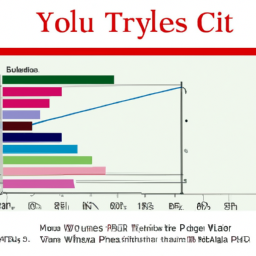Treasury bills and certificates of deposit (CDs) are two of the most popular forms of investments for individuals looking for a safe, low-risk option. Treasury bills, also known as T-bills, are short-term securities issued by the U.S. government that mature in 4 to 52 weeks. CDs are similar to T-bills, with slightly longer maturity terms and higher yields. Both are backed by the U.S. government and can be used for short or long-term investments.
T-bills are highly liquid, with maturities ranging from a few days to 52 weeks, and they offer a fixed return at a relatively low risk. The interest rate of a T-bill is determined by the market, and it is typically higher than the interest rate of a money market fund. T-bills are attractive to investors because they are issued and backed by the U.S. government, and they can be used to diversify a portfolio.
CDs are similar to T-bills in that they offer a fixed return at a relatively low risk. However, CDs have longer maturity terms, ranging from 6 months to 5 years, and they typically offer higher yields than T-bills. CDs can also be used to diversify a portfolio, but they are not as liquid as T-bills.
For investors looking to invest in Treasury bills and CDs, there are a few things to consider. First, it is important to understand the different types of T-bills and CDs and the risk associated with each. Second, investors should research the current market conditions to determine the best time to invest. Third, investors should consider the fees associated with each type of security, as well as the minimum and maximum invest amounts. Finally, investors should weigh the potential returns of each security against the risk associated with them.
In addition to T-bills and CDs, investors may also consider invest in US Treasury 3 Month Bill ETFs. These ETFs invest in very short-term Treasury bills and aim to match the performance of the 3-month Treasury bill market. These ETFs are a good choice for investors looking for a low-cost and low-risk option, as they are not as volatile as stocks and other investments.
Finally, investors may also consider invest in Treasury bonds. Treasury bonds (T-bonds) are long-term securities with maturities of 20 or 30 years. They pay interest semiannually, and the principal is repaid at the end of the bond's term. T-bonds are typically more expensive than T-bills and CDs, but they offer higher yields and longer-term returns.
In conclusion, Treasury bills and CDs are two of the safest and most popular forms of investments for individuals looking for a safe, low-risk option. They offer fixed returns at a relatively low risk, and can be used for short or long-term investments. However, it is important to understand the different types of T-bills and CDs and the risk associated with each before invest.
